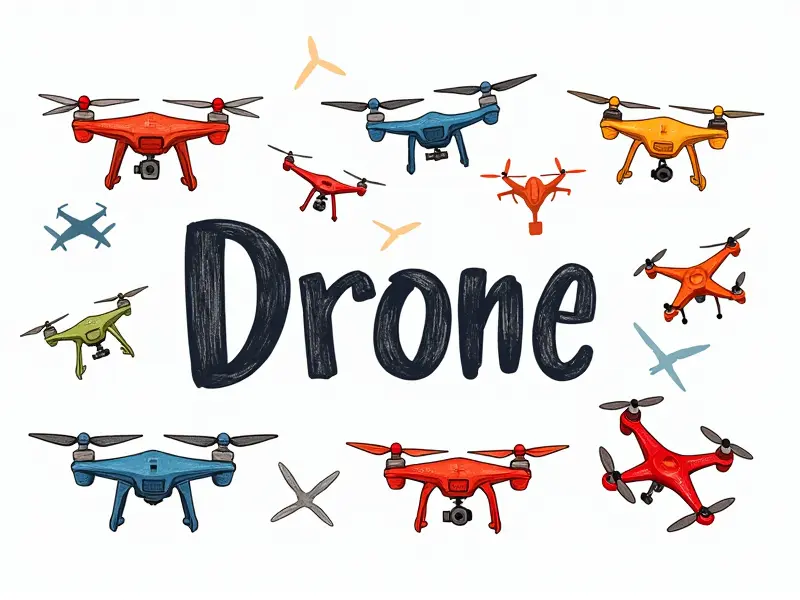Drone filmmaking tutorials

Top Tips for Stunning Drone Footage
Welcome to the world of drone filmmaking! Whether you're a seasoned professional or just starting out, capturing breathtaking aerial footage can elevate your projects to new heights. This article will guide you through essential tips and techniques to help you master drone cinematography.
Master Drone Cinematography Basics
To start off on the right foot, it's crucial to understand the fundamentals of drone filmmaking. Familiarize yourself with your drone’s controls and features before venturing into complex shots. Practice flying in different conditions and environments to get a feel for how your drone behaves.
Beginner's Guide to Drone Videography
If you're new to the field, it can be overwhelming to know where to begin. Start by learning about basic camera settings such as ISO, shutter speed, and aperture. These elements will help you achieve the desired look for your footage.
Understanding Camera Settings
- ISO: Controls sensitivity to light; higher ISO allows shooting in low-light conditions but may introduce noise.
- Shutter Speed: Affects motion blur and exposure. Slower speeds create smoother footage, while faster speeds freeze movement.
- Aperture: Controls depth of field; wider apertures (lower f-stop numbers) result in a shallow focus, making backgrounds blurry.
Essential Gear for Drone Filmmakers
The right equipment is crucial to achieving professional-quality drone footage. Here are some must-have items:
- Drones with 4K Cameras: High-resolution cameras provide crisp, detailed images.
- Batteries and Chargers: Ensure you have enough power for extended shoots.
- Extra Propellers: Always carry spare propellers to avoid downtime due to accidents.
- Remote Controllers: Reliable controllers are essential for precise control over your drone.
How to Plan a Drone Shoot
Proper planning is key to successful drone footage. Consider the following steps before hitting the field:
- Scout Locations: Research and visit potential shooting sites in advance.
- Weather Conditions: Check weather forecasts for optimal lighting and wind conditions.
- Permits and Regulations: Ensure you have all necessary permits to fly your drone legally.
Creative Drone Shots and Techniques
Beyond the basics, there are numerous creative techniques you can employ to make your footage stand out. Experiment with different angles and movements such as:
- Orbital Shots: Circle around a subject for dynamic visuals.
- Dolly Zooms: Simulate the "Vertigo effect" by moving closer to or further from your subject while adjusting focal length.
- Panoramic Scans: Capture wide landscapes with sweeping camera movements.
Drone Camera Angles Explained
Understanding different camera angles can dramatically enhance the visual storytelling in your drone footage. Commonly used angles include:
- Bird's Eye View: Provides an aerial perspective, ideal for showcasing large areas.
- Dutch Angle (Canted Shot): Creates tension and unease by tilting the camera horizontally.
- Low-Angle Shots: Elevate subjects to make them appear more powerful or imposing.
Post-Processing Tips for Drones
After capturing your footage, post-processing is crucial to refine and enhance the visuals. Use software like Adobe Premiere Pro, Final Cut Pro, or DaVinci Resolve to:
- Color Grading: Adjust colors to match a specific mood or style.
- Noise Reduction: Minimize graininess caused by high ISO settings.
- Stabilization: Smooth out any jittery movements for professional results.
Best Practices for Legal Drone Photography
Operating a drone legally is paramount. Familiarize yourself with local regulations and guidelines to avoid fines or legal issues:
- Airspace Regulations: Know the rules regarding no-fly zones, altitude limits, and proximity to airports.
- Data Privacy Laws: Be mindful of privacy concerns when filming people in public spaces.
- Licensing Requirements: Obtain any necessary licenses or certifications for commercial drone use.
Editing Tips for Drone Videos
Effective editing can transform raw footage into compelling narratives. Focus on:
- Storytelling: Use transitions, cuts, and pacing to convey a clear narrative.
- Musical Scores: Choose music that complements the mood of your video.
- Title Cards: Add text overlays for introductions, conclusions, or key information.
Drone Filming Composition 101
Composition is vital in creating visually appealing drone footage. Apply principles such as the rule of thirds, leading lines, and framing to guide viewers' eyes through your shots:
- Rule of Thirds: Position key elements along imaginary gridlines for balanced compositions.
- Leading Lines: Use natural or man-made lines to draw attention to the focal point.
- Framing: Enclose subjects within objects in the foreground to create depth and context.
Conclusion
Mastery of drone filmmaking requires dedication, practice, and continuous learning. By following these tips and techniques, you'll be well on your way to capturing stunning aerial footage that captivates audiences and elevates your projects to new heights.

